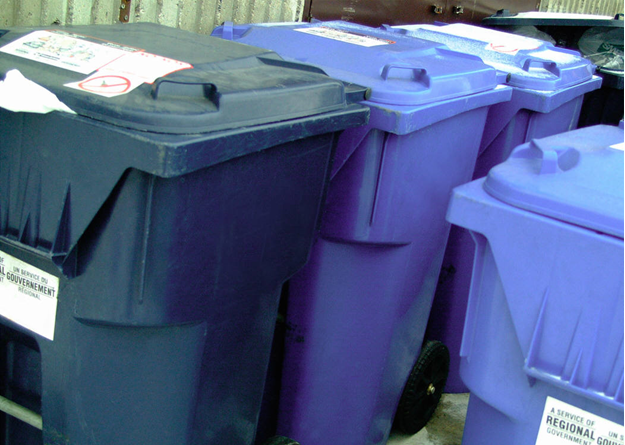As the “green” movement has risen to prominence over the past decade, its mission of environmental consciousness-raising has helped to refine and expand recycling practices. Blue waste bins with the triangle arrow symbol, and the rules governing how trash must be sorted before going into them, are now a commonplace part of home and work life for many people.
For businesses, these basic recycling practices are relatively easy and inexpensive to implement. But that can be a problem: once the blue bins are in place, complacency often sets in, sapping the drive to explore some of the more innovative, larger-scale techniques and technologies that can be, in some cases, as good for the bottom line as they are for the environment.
In honor of America Recycles Day, we’ve researched some of these innovative techniques and technologies, and how they can achieve the dual purpose of cutting costs while substantially reducing environmental impact.
The following are just examples, but they should help illustrate the fact that recycling is an evolving field and new technologies are constantly emerging, so it’s important to stay up to date on the latest developments.
Core Charges
Anyone who works in the fleet industry will be familiar with core charges. When a price is quoted for certain auto parts, a core charge is listed to reflect the value of the raw components contained in the part. Once the part has been used to failure, it can be returned to the seller for a refund of the core charge. The seller will then refurbish the part or sell it for scrap.
While not necessarily a “new” technique, taking full advantage of core charge refunds can actually pose a significant administrative burden. For large fleets, in particular, parts can accumulate quickly, making it difficult to keep track of their various core charges and warranties. And it is impossible to predict with 100% accuracy when a part may fail.
Robust fleet management software can help by tracking all parts inventory in one centralized place. Warranty and core charge information can be tracked on every part, and processes can be implemented to ensure that core charges are being redeemed regularly.
Core charges often constitute a significant portion of the overall part cost. Ensuring that this value is recovered once the part is no longer functional can save serious money over the long run.
Oil and Lubricant Recycling
By implementing an oil recycling program, firearms maker Smith & Wesson® was able to reduce the per-gallon cost of oil replacement by $6-$8 dollars for mineral oil, and $60 for synthetic oil. According to a case study on the program, the company realized these big efficiency gains after acquiring a Driflex Oil Conditioning System, so that they could recycle their lubricants onsite rather than outsource the work to another firm.
This case perfectly illustrates the idea that firms should be proactive in their recycling efforts: while many companies may have been scared off by the initial investment, Smith & Wesson® took the long view of the potential effect bringing such capacity onsite could have on its bottom line, and it paid off—fast. It took just two months for Smith & Wesson® to achieve ROI with the system, and the company was able to lower its ongoing operating costs from $4,500 to $52,500, according to the case study.
If the upfront costs of bringing oil recycling capacity onsite are prohibitive, outsourcing the work is worth a look. Particularly for smaller businesses that don’t have the infrastructure to accommodate a large system, third party firms may be the more feasible option.
Deconstruction and Recycling
To construction outsiders, demolition and destruction would seem to be two ways of describing the exact same process. Yet while both methods achieve the same result—the removal of a structure from a piece of property—the means they employ to do so vary significantly, with big implications for material recycling.
In demolition, bulldozers, wrecking balls, and other equipment is used to tear down a building with no regard for the preservation or reuse of the material left behind. In deconstruction, a building is carefully disassembled piece by piece, with care taken to ensure that as much material can be reused as possible. The deconstruction method can help companies save money by either selling the recovered material, or donating it in exchange for government tax credits (the LEED certification program awards a point to new construction and major renovation projects that repurpose materials).
In order to maximize the benefits associated with deconstruction, careful planning is necessary to ensure that there will be a market for recovered materials. The deconstruction process is typically more costly than traditional demolition, so it is essential to weigh the costs and benefits beforehand. The availability of government tax credits, however, provides an attractive additional incentive for considering deconstruction, so it’s important to be sure all options are being considered.
Many Options to Choose From
Every company is different, but in the end, everyone must share from the same pool of resources. Thanks to advocacy efforts, more and more people are becoming familiar with the importance of recycling in sustainability efforts. But the more important lesson, in the long term, may be that environmentally friendly policies can also be hugely beneficial for the businesses by reducing waste and cutting costs. Review recycling and waste reduction strategies regularly to be sure you’re not missing out on big savings.

